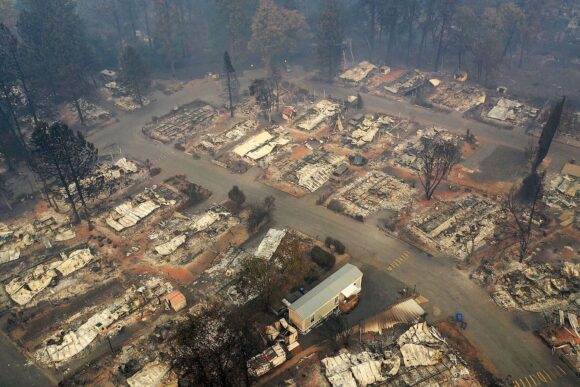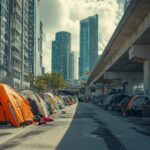“I conceive that the great part of the miseries of mankind are brought upon them by false estimates they made of the value of things.” — Benjamin Franklin
It seems difficult to watch a daily newscast that doesn’t have a segment on the latest wildfire. California. Colorado. South Carolina. New York. The list goes on. The frequency of wildfires appears to be increasing and, with the encroachment of civilization, the economic severity is definitely increasing due to the combined effect of the proliferation of residential and commercial structures and our failure to actively engage in loss prevention measures.
Gen. Jimmy Doolittle once said, “The problem with Americans is that we’re fixers rather than preventers.” In our industry, that is all too often the truth.
As the risk of loss, such as from wildfires, approaches certainty, the insurance mechanism becomes an unsustainable means of managing risk. But there are some things that insurance professionals can do and lessons we can learn from these wildfires. In this article, I’ll focus on just a few of the many.
Property Undervaluation
The first one is the obvious one: properly evaluate the replacement cost of structures and contents, select adequate limits of insurance, and include insurance contract provisions that recognize the increased cost of repair and replacement following a major disaster.
Early in my career at ISO, we offered valuation services using a choice of Marshall & Swift, Boeckh, and/or McGraw Hill products. Over the years, they morphed into Marshal & Swift/Boeckh and ultimately CoreLogic, now Cotality. For many years, M&S/Boeckh published a report on property undervaluation.
Typically, these reports indicated that most residential and commercial buildings were underinsured, often by 20%-35%, and sometimes individually by 200%-300%. I wrote about this in my December 2023 Insurance Journal column titled “5 Worthy New Year’s Resolutions.”
Has this problem improved? Given what seems to be a never-ending hard market, that’s probably unlikely. Given that the vast majority of losses are partial and not total, the focus is on reducing premium costs, and the easiest way to do that is to buy as little building coverage as possible without incurring a penalty under a coinsurance or insurance-to-value clause.
This approach works most of the time, but it results in higher unit rates and invariably leads to gross underinsurance in the event of total or near total losses–the kind of losses one encounters in widespread disasters like wildfires and localized events like tornados.
In the case of conflagrations like wildfires, there are other considerations beyond just the proper valuation of property. Take, for example, debris removal.
Debris Removal Coverage
The cost to remove and dispose of debris is usually included in the policy limit for that type of property unless the limit is exhausted, as can happen with a total loss. Both the California Paradise and Camp fires are estimated to have destroyed about 17,000 structures, resulting in 12-16 billion pounds of debris.
In the case of the Paradise wildfire, there will likely be millions of pounds of toxic debris that must be processed at significant cost. The total cost to identify, clear, transport, and dispose of all debris will likely cost billions of dollars. Demolition, haulage, and landfill tipping fees can be significant, especially following a major disaster.
An additional issue is that many policies, especially commercial forms, have a sublimit for debris removal. For example, in one instance, the direct damage to a building was about $250,000, but due to the remote location of the property, the debris removal expense approached a million dollars–far greater than the 25% sublimit in the policy. The cost to remove debris can be similarly high in congested city locations.
Similar to sublimits that can restrict debris removal coverage, many policies provide an additional amount of coverage beyond the policy limit. That may be an extra 5% in homeowners policies and a flat dollar amount of perhaps $10,000-$25,000 in commercial property forms when policy limits are exhausted.
Most property policies have options for purchasing additional amounts of debris removal coverage. However, the problem with this is that these are options that may not be routinely offered by agents and rarely purchased by insureds when offered. There is also the added difficulty of estimating how much additional debris removal coverage is appropriate.
Business Income/Extra Expense and Additional Living Expense Coverages
Some years ago, I researched the impact of major losses on businesses and found that, according to one estimate based on hurricanes impacting the Carolinas, 43% of businesses that experienced a serious loss never reopened and 28% of those that did reopen closed within 3 years. While a large national chain store system can usually survive the loss of one store, small businesses usually cannot.
Similarly, in the case of Additional Living Expense (ALE) coverage in homeowners policies, it can take years before a community can recover from a major disaster. In the meantime, with limited ALE coverage, many homeowners may be forced to simply relocate.
The implications for businesses and residents impacted by disasters like wildfires when these income coverages are inadequate are obvious, as is the impact on the communities themselves. As we’ve learned in Colorado and California, in particular, rebuilding communities takes many years and financial survival is difficult for everyone and impossible for many.
Ordinance or Law Coverage
Finally, as I run out of room in this month’s column, we have the issue of the impact of rebuilding from that standpoint of increased costs to comply with inevitable changes in building codes, zoning restrictions, and other legal impediments and restrictions.
It’s an easy prediction to make that home and business owners in Paradise are likely to be grossly underinsured when it comes to compliance with new laws impacting rebuilding. We could devote an entire year to a series of columns on that one aspect.
So, will anything be done by the industry to address the many facets of the underinsurance issue?
In 2012, at the insistence of the Big “I” technical affairs committee, ISO introduced form CP 04 09 – Increase in Rebuilding Expenses Following Disaster (Additional Expense Coverage on Annual Aggregate Basis). This is a start, though admittedly, determining how much additional expense coverage is needed is no easy task.
Will anything be done by governments to enact building codes and zoning ordinances and engage in loss prevention methods to address catastrophic exposures like wildfires and floods?
I’ll close this month’s column with another quotation, this one from the German philosopher Hegel: “What experience and history teach is that nations and governments have never learned anything from history and have never acted in accordance with the lessons that could have been drawn from it.”
I hope Hegel was wrong.
Topics Catastrophe Natural Disasters Wildfire
Was this article valuable?
Here are more articles you may enjoy.



 White House Seeks to Bring Financial Regulators Under Its Sway
White House Seeks to Bring Financial Regulators Under Its Sway  Markel Insurance Restructures Markel Specialty, Appoints Leaders
Markel Insurance Restructures Markel Specialty, Appoints Leaders  South Florida Insurance Broker Pleads Guilty to Fraud in $133M ACA Enrollment Scheme
South Florida Insurance Broker Pleads Guilty to Fraud in $133M ACA Enrollment Scheme  Questions About How a Deputy’s Stepson Became the Accused Gunman at FSU Shooting
Questions About How a Deputy’s Stepson Became the Accused Gunman at FSU Shooting 



